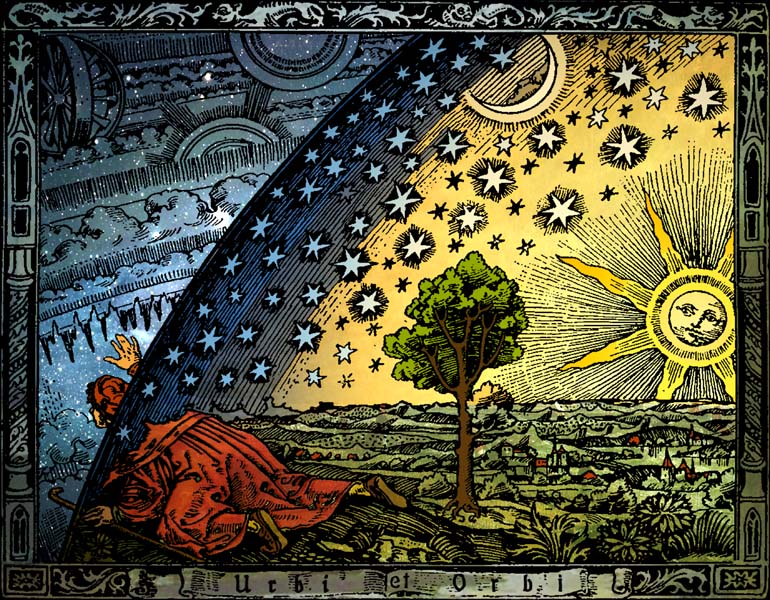
Flammarion Woodcut
Wikipedia:
“The Flammarion woodcut is an anonymous wood engraving (once believed to be a woodcut), so named because its first documented appearance is in Camille Flammarion’s 1888 book L’atmosphère: météorologie populaire. (…)
The engraving depicts a man, dressed as a mediaeval pilgrim and carrying a pilgrim’s staff, who peers through the sky as if it were a curtain to look at the hidden workings of the universe. (…)
The caption that accompanies the engraving in Flammarion’s book translates as: “A missionary of the Middle Ages tells that he had found the point where the sky and the Earth touched…”
The text that accompanies the image reads, in part: “What, then, is this blue sky, which certainly does exist, and which veils from us the stars during the day? … And yet this dome does not exist. In a balloon, I myself have risen higher than where the Greek gods were supposed to live without getting to this point, which of course disappears at the same rate in which we approach it.””
Camille Flammarion, French astronomer, 1880:
“What intelligent being, what being capable of responding emotionally to a beautiful sight, can look at the jagged, silvery lunar crescent trembling in the azure sky, even through the weakest of telescopes, and not be struck by it in an intensely pleasurable way, not feel cut off from everyday life here on earth and transported toward that first stop on the celestial journeys?
What thoughtful soul could look at brilliant Jupiter with its four attendant satellites, or splendid Saturn encircled by its mysterious ring, or a double star glowing scarlet and sapphire in the infinity of night, and not be filled with a sense of wonder?
Yes, indeed, if humankind – from humble farmers in the fields and toiling workers in the cities to teachers, people of independent means, those who have reached the pinnacle of fame or fortune, even the most frivolous of society women – if they knew what profound inner pleasure await those who gaze at the heavens, then France, nay, the whole of Europe, would be covered with telescopes instead of bayonets, thereby promoting universal happiness and peace.”







1 comentário
Muito bom